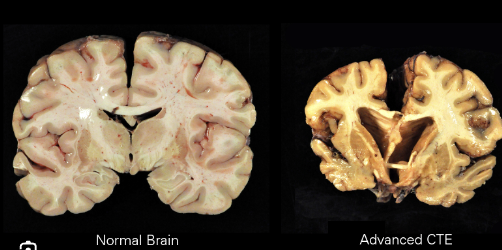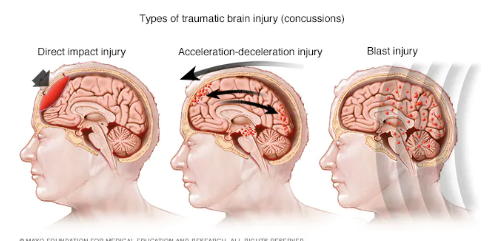Impact sports such as Rugby, NRL, AFL, and American football carry inherent risks of head injuries, notably concussions, which can lead to Chronic Traumatic Encephalopathy (CTE). CTE is a progressive neurodegenerative disease associated with repeated head trauma. Understanding the mechanisms of concussions, the development of CTE, its behavioral manifestations, and the importance of protective gear is crucial for enhancing athlete safety.
Understanding Concussions and Their Link to CTE
A concussion is a mild traumatic brain injury (TBI) resulting from a blow to the head or body, causing the brain to move rapidly within the skull. This movement can lead to brain cell damage and chemical changes, manifesting as symptoms like headaches, confusion, memory loss, and dizziness. In contact sports, concussions often occur during tackles, collisions, or falls.
Repeated concussions or sub-concussive impacts can initiate a cascade of neurodegenerative processes, potentially leading to CTE. CTE is characterized by the accumulation of tau protein deposits in the brain, which disrupt normal brain function and lead to cell death. Symptoms of CTE can include memory loss, confusion, personality changes, aggression, depression, and suicidal thoughts. These symptoms may not emerge until years or decades after the initial injuries.
.

Behavioral Changes and Associated Risks
Individuals with CTE often experience significant behavioral and mood alterations.
These can encompass increased aggression, impulsivity,
and emotional instability. Tragically, there have been instances where individuals with CTE have committed suicide. Moreover, CTE has been linked to other neurodegenerative diseases, such as Alzheimer’s disease, due to similar pathological features like tau protein accumulation.
.
Challenges in Diagnosing CTE
Currently, CTE can only be definitively diagnosed post-mortem through a neuropathological examination of brain tissue. While clinical criteria for diagnosing Traumatic Encephalopathy Syndrome (TES), associated with CTE, have been developed, these are primarily used for research purposes and do not provide a definitive diagnosis during life
The Role of Protective Gear in Mitigating Concussions
Preventing concussions is paramount, and protective gear plays a significant role in reducing head injury risks. Innovations like Fempro Armour offer advanced protective equipment designed to absorb and disperse impact forces, thereby minimizing the likelihood of concussions. By reducing the force transmitted to the brain during collisions, such gear can help mitigate the risk of developing CTE over time.
There are many stories about concussions & CTE in players. Kirkbank-Ellis remembers, when he was four years old, he was asked to make a choice: his father told him he could play football or do chores on the family farm in New Zealand. Without hesitating, he chose football. It was the start of more than three decades of contact sport for Kirkbank-Ellis, competing in rugby, karate, rugby league, and 10 years of boxing. Read his story (ABC News) here
Participation in impact sports carries a risk of concussions, which can have long-term consequences like CTE. Recognizing the signs, understanding the risks, and implementing preventive measures—including the use of protective gear—are essential steps in safeguarding athlete health and well-being.
Click HERE to checkout our protective gear for AFL, Rugby, NRL, Basketball, Netball, Roller Derby, American Football and there like.
R.I.P to those the Australia players that suffered CTE
Heather Anderson – AFL

